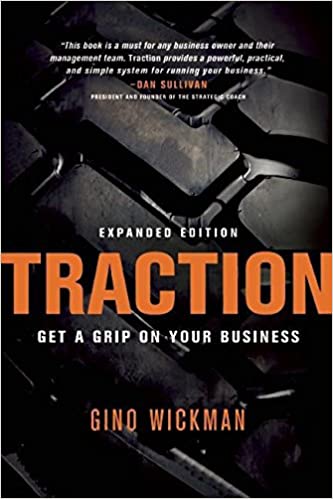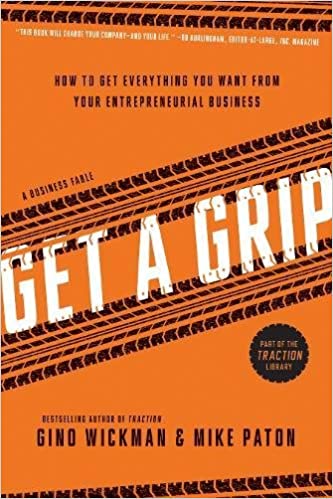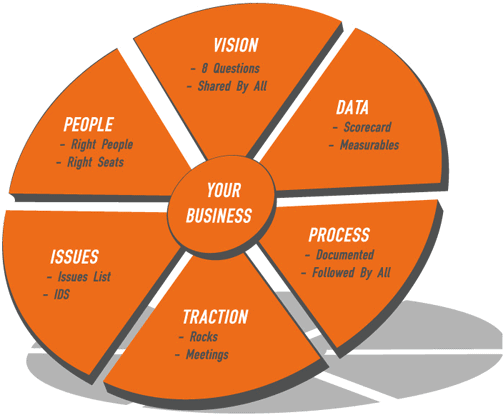WINDMILL IS AN EOS-DRIVEN MARKETING COMPANY AND A PARTNER TO YOUR EOS MARKETING STRATEGY
EOS®, the Entrepreneurial Operating System, is a set of concepts and tools that thousands of teams use to get more from their businesses and achieve their goals faster. Windmill Strategy has been running on EOS since 2018, and it’s strengthened our team, leadership, processes, data and focus.
It also means that we understand the specific EOS terms you use if you’re an EOS company, and we’re uniquely positioned to help EOS companies gain traction through their EOS marketing plan. Although most of our clients are not EOS companies (so don’t worry if you’re not familiar with this system), EOS principles provide broad-based benefits for any company looking to grow and achieve greater success. We’re aligned to help B2B companies build the vision and create the traction needed within the sales and marketing functions, particularly as they intersect with websites, internet marketing and digital campaigns.
What is EOS?
Many people also refer to EOS as Traction, the title of the book famous within business circles (see also Get a Grip, an easier, more narrative read for those new to the system). You can read more about EOS at EOS worldwide; regardless of your familiarity with the Entrepreneurial Operating System (EOS), the philosophy behind EOS as it pertains to marketing is something that any company can take advantage of.
The EOS Marketing Plan Creates Alignment between Marketing and Sales
Unless you have unlimited time and resources, it’s crucial that you define who your best customers are (your ideal customer profile, or ICP) and align sales and marketing to attract more people and accounts just like them. The most important parts of an EOS marketing plan are:
Target Market
Who is your best client? What are their demographics, psychographics, firmographics? How can you describe them in such a way that you could create a filter within LinkedIn or ZoomInfo to get a list of ideal prospects? Think about company size, industry, geography, as well as how they think and what problems they’re trying to solve. If you don’t yet know the answers to these questions, look at where your revenue comes from. Does 80% of your revenue come from 20% of your clients? Who are those clients and what do they have in common?
Three Uniques
What makes you different from the competition? Be careful to choose differences that your ICP really cares about, over differences that may matter more to you than your clients. All of your “uniques” may not be completely different than the competition, but your company’s combination of uniques should be distinct.
Proven Process
An important part of your OES marketing strategy is your proven process. How do you do what you do, in a repeatable fashion? What IP have you developed to ensure that you consistently deliver excellence? Does everyone on the team follow this like clockwork? Defining processes is the first step, followed by depicting and communicating these processes in a way that generates trust with prospects.
Guarantee
What is your promise to your customers? What do you guarantee that they will get out of working with you, and how are you willing to back that up? Why should the customer care?
The EOS Marketing Process: Gaining Traction with 90 day sprints
A fundamental principle of EOS is the 90-day sprint, defined by quarterly meetings and rocks. A quarterly, often all-day meeting gives space for leaders to step back and review what’s working and not working, the overall health of the company, adjust long-term planning, and set specific, measurable, achievable, realistic and timely (SMART) goals for the next 90 days. These meetings mirror our quarterly marketing meetings, in which we review website and digital marketing performance, sales/lead quality data, overall company-wide initiatives, and prioritize a plan for the most critical actions for implementation over the next 90 days. For more details and a checklist to do these on your own, read how to do a quarterly review of your marketing health.
Quarterly Marketing Rocks
Right after your internal quarterly meeting is the perfect time to carefully define activities based on your quarterly marketing rocks, or further define those rocks with the help of your marketing consultant or team. If you haven’t already calculated your sales velocity, our team can help create this, and work backwards to define leading marketing metrics, and prioritize the marketing tasks and activities needed to drive toward your goals. We’ll also review deal capacity (This is the amount of leads a sales person or team can take on without being overloaded.), win rate, average deal value, and sales cycle length, to calculate a sales velocity figure.
Benefits of EOS for Marketing and Communications
We appreciate how smart and organized all of our B2B technical clients are. EOS lends itself especially well to these industries, as it reinforces some of the things that most are already doing:
Clear Short and Long Term Goals
The VTO (Vision Traction Organizer) is a written document that articulates 1-year, 3-year, and 10-year vision, growth goals, and the activities needed to reach them. All marketing plans need to be adjusted periodically, as the world around us changes, and the EOS platform has built-in flexibility to modify and adjust course. Clear goals means that we can carefully align with what matters most to our clients and ward off any tendencies to get caught up with “shiny objects” or exciting activities that don’t actually drive toward the vision.
Defined Values
EOS companies have clearly stated, and universally understood values. This ensures that everyone is working together toward a common way of doing business; it also means they can find marketing companies and consultants that align with their values. At the end of the day, people work with people, and we all want to help others achieve success while enjoying the relationships and people that we work with.
Incremental and Agile Improvement
EOS revolves around a 90-day world. What can you achieve to make a difference in the short-term, in such a way that it builds toward the long term vision? This mindset facilitates agile and incremental improvements that can be built, deployed and have immediate impact. Performance data can inform further optimizations, and traction can build sooner than waiting for large waterfall projects that try to tackle every need at once.
EOS Values the Marketing Scorecard
When you clearly define the leading metrics that matter most, and share them with your entire marketing team, you get the benefit of everyone’s alignment on both the big picture and the details. This allows us to bring much more value to the engagement than what you might find in a typical vendor relationship. As needed, we can also advise on key leading indicators to track on an EOS marketing scorecard. Clear metrics and goals allow us to clearly measure what’s working and do more of it, while cutting out activities that aren’t contributing to meeting the goal.
EOS Defines the Target Market
Our services include customer interviews and persona building to further define the major players within your ICP, but companies who’ve already clearly defined their specific targets and know more about their buying habits already have a leg up and can begin other activities more quickly.
Take the Next Step
Whether you’re already on EOS, thinking about implementing it, or just looking for more from your marketing, we can help. Contact us to learn more today, and start building for your future.
More Information on EOS
If you’d like more information about EOS, visit the EOS Worldwide website and start with “What is EOS” and the “EOS Model.” You might also enjoy these books, as an introduction:

Traction
The EOS manual, this is required reading for companies who are thinking about EOS.

Get a Grip
This book covers the same material in a more narrative form, and is an easier read.



